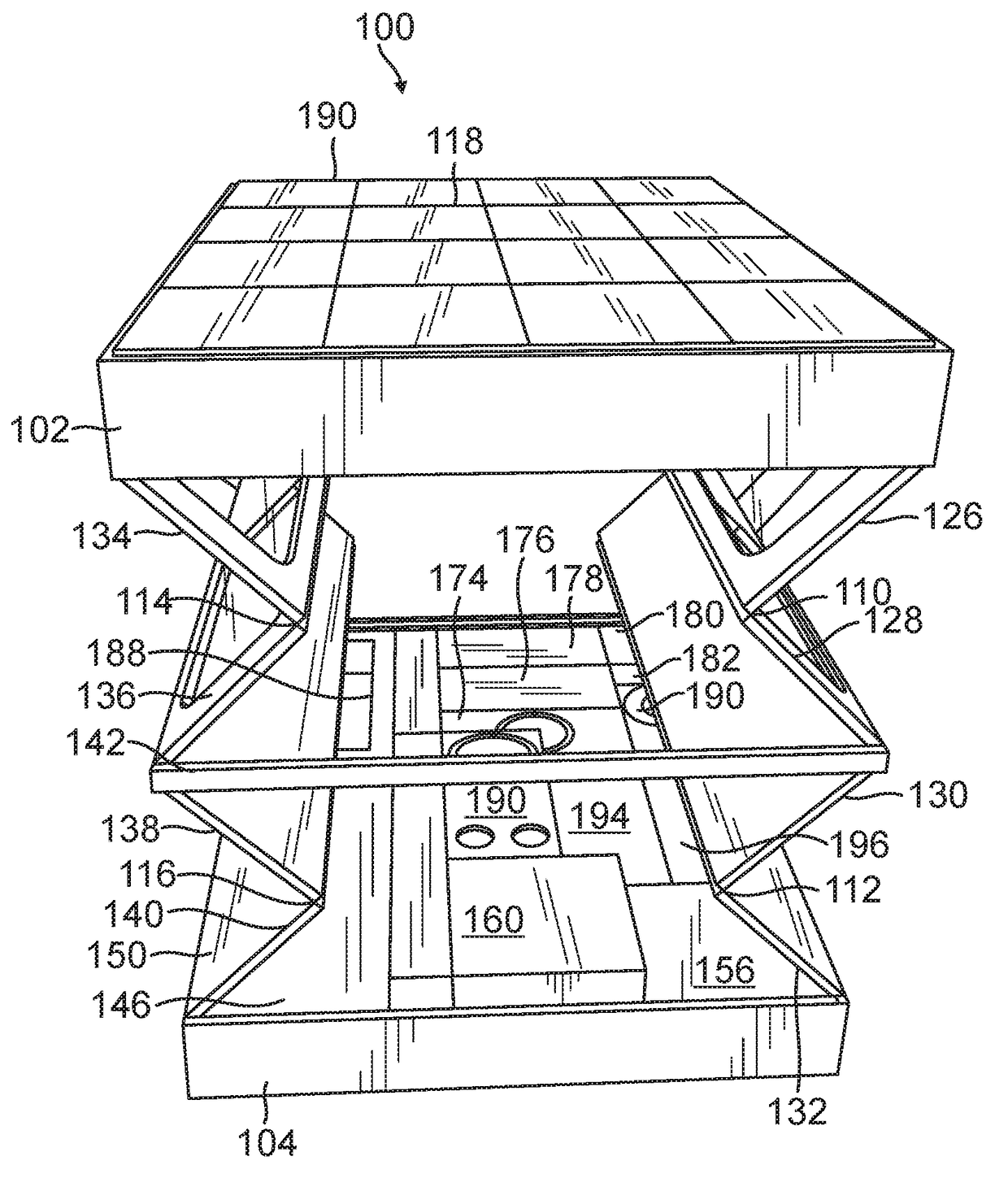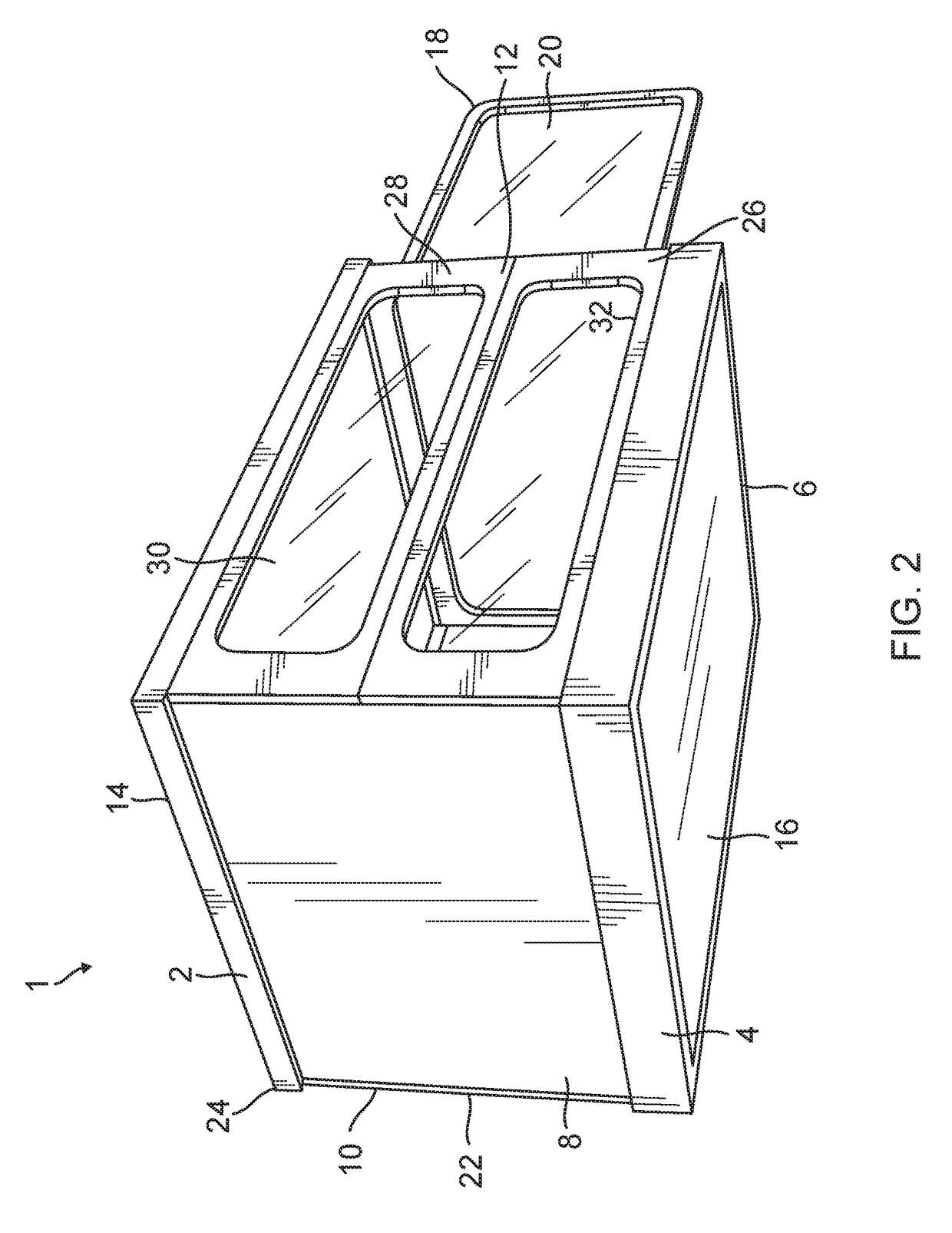Collapsible Shelter
a shelter and collapsible technology, applied in the field of collapsible shelters, can solve the problems of correspondingly limited protection, low security and protection, and highly portable structures generally cannot be insulated, and achieve excellent weather protection, easy portability, and easy unfolding.
- Summary
- Abstract
- Description
- Claims
- Application Information
AI Technical Summary
Benefits of technology
Problems solved by technology
Method used
Image
Examples
Embodiment Construction
[0050]Described herein are devices, components, assemblies, systems, methods, etc. for shelters and campers. The description and accompanying figures, which describe and show certain embodiments, are made to demonstrate, in a non-limiting manner, several possible configurations of shelters, campers, apparatuses, components, assemblies, systems, etc. and various methods of using them according to various aspects and features of the present disclosure. Accordingly, the disclosure is not limited to the specific embodiments described. Rather, the inventive principles associated with the embodiments described herein, including with respect to the apparatuses, devices, components, assemblies, systems, methods, etc. described herein, may be applied in a variety of ways, including to other types of apparatuses, devices, components, assemblies, systems, methods, etc. General and specific apparatuses, devices, components, assemblies, systems, methods, etc. are described herein sufficiently to...
PUM
 Login to View More
Login to View More Abstract
Description
Claims
Application Information
 Login to View More
Login to View More - R&D
- Intellectual Property
- Life Sciences
- Materials
- Tech Scout
- Unparalleled Data Quality
- Higher Quality Content
- 60% Fewer Hallucinations
Browse by: Latest US Patents, China's latest patents, Technical Efficacy Thesaurus, Application Domain, Technology Topic, Popular Technical Reports.
© 2025 PatSnap. All rights reserved.Legal|Privacy policy|Modern Slavery Act Transparency Statement|Sitemap|About US| Contact US: help@patsnap.com



